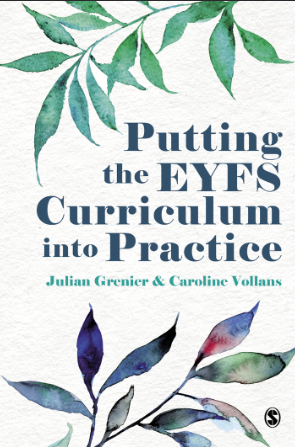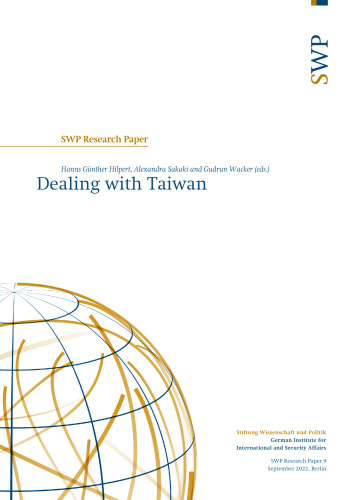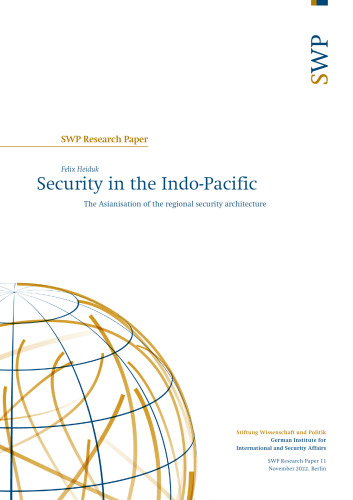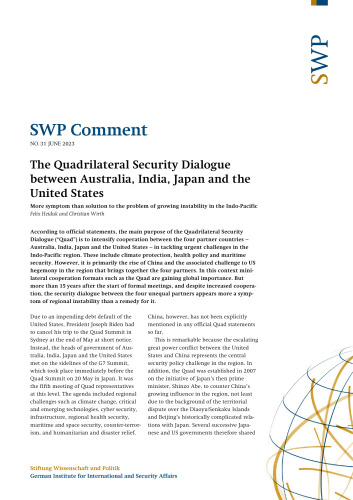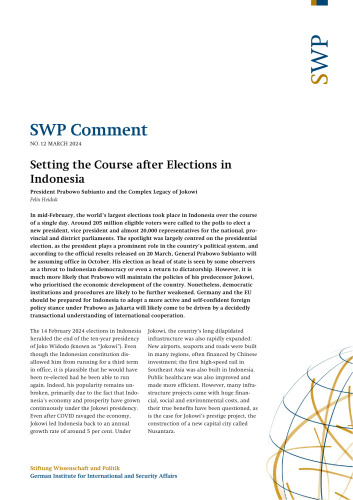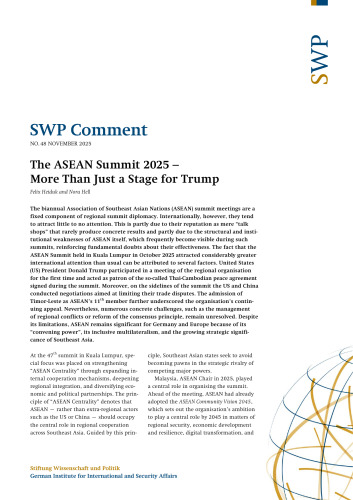is pressure to ‘get children writing’ in Reception, this can be at the expense of their speaking and listening. Without well-developed early language and a rich vocabulary, children will struggle to read and write well. What happens when we make children write sentences, when they do not yet have the physical dexterity they need? The children end up ploughing their pencils miserably through exercise books, achieving little and losing all motivation to write. Disadvantaged children are already well behind all children by the end of the early years. That 4.6 month gap doubles by the end of primary school, and doubles again by the end of secondary. Similar gaps affect many children from ethnic minority backgrounds, most notably children of Gypsy/Roma, Black Caribbean and Pakistani heritage. This is an unacceptable state of affairs. THE IMPORTANCE OF CURRICULUM Curriculum Guidance for the Foundation Stage suggested that children learn in two major ways: when they play freely in well-resourced environments, with adults sometimes intervening sensitively when adults show children how to do things, by modelling Shortly afterwards, the important EPPE (Effective Pre- School Education) study began reporting its findings. Together, the introduction of a statutory phase, and the dissemination of research findings, brought about a radical improvement in early childhood education in England (Siraj-Blatchford et al., 2008). Findings from the linked REPEY (Researching Effective Pedagogy in the Early Years) study showed which practices in early education were effective in promoting children’s learning. Notably, this included ‘Sustained Shared Thinking’, defined as: ... an episode in which two or more individuals ‘work together’ in an intellectual way to solve a problem, clarify a concept, evaluate activities, extend a narrative etc. Both parties must contribute to the thinking and it must develop and extend. (Siraj-Blatchford et al., 2002, p. 8) Here, we see how sophisticated understanding of both curriculum and pedagogy are necessary. As practitioners, we are ‘scaffolding’ children’s learning. We give children just enough help to achieve something they could not do on their own. We are constantly mindful of children’s emergent development: what they are learning to do, but can’t quite do yet. This is a deeper and richer understanding of the adult role than the useful but limited suggestions in Curriculum Guidance for the Foundation Stage : ‘intervening sensitively’ whilst children play, and ‘modelling’. This means that we need a wide-ranging pedagogical repertoire. Sometimes it is important to let children initiate their own play freely (Whitebread et al., 2005). But we also need to be mindful that children’s play can become quite repetitive, without sensitive intervention and support from adults. If children have a narrow range of interests and vocabulary when they come into a setting, then they will need practitioners to introduce them to new experiences and words. Even in a very wealthy country like England, many children are growing up in poverty. Those children need early years provision which offers them great riches. They also need us to drive social change to eliminate child poverty. CHILD DEVELOPMENT Practices like ‘Sustained Shared Thinking’ (Siraj- Blatchford et al., 2002; Siraj-Blatchford, 2009) require us to understand child development. We might visualise child development as a series of waves, overlapping each other, rather than seeing it like a stepladder, with one stage very clearly separate to the next. To switch to a different metaphor: with child development, we know the overall direction of travel. But, at any one moment, we cannot say definitely what a child’s typical development might look like. Just because some children achieve a certain set of developments at the age of 3, doesn’t mean that all children will. Imagine you are travelling out of a big city into the countryside. The overall change you will see is a shift from built-up streets, housing and shops to more open country with more sky and fewer buildings. However, at any moment, what you see may not exactly indicate where you are. You may look out the window and see lots of grass, trees and space, and be next to a large urban park. You may see shops and dense housing and be passing through a country town. When we think of children’s learning, we need to understand the big picture. As we consider children’s emergent learning, we will carefully balance children’s independent play with an intentional approach. Epstein (2007) usefully defines ‘intentional teaching’ as acting with specific outcomes or goals in mind for every area of children’s learning. We will not serve the children’s interests best if we look at a stepladder outline of early development and paste in ‘next steps’ onto a plan for the child, or group. Sometimes, it is argued that children and child development have not changed. We should stick to practices which have served children perfectly well for decades. I would argue otherwise. Child development is an interactive process. It involves the child and their biology, and it also involves important people and the wider culture. For example, children now are ‘digital natives’. They switch smoothly between the online world, and the real world. They watch a Spiderman cartoon on YouTube, fashion a cape from a bit of material and set about saving the world. The impact of ICT on child development may be cause for concern, or something to welcome. Either way it has changed childhood and child development. You could make the same argument about the loss of play out in the streets. As I write, I am looking out over a small street in East London lined with cars. Thirty years ago, it would have been teeming with children. We have seen great changes to childhood. Children now spend much more time away from their families, in early years settings. They have many more social connections. This means that early education and care now provide a space for the experiences children would once have had in the home and on the street. Child development has changed. Early education and care has changed, too. These changes mean that play is, if anything, even more important in the early years than it used to be. PLAY AND CURRICULUM For play-based approaches to work, supporting children’s communication is crucial. As children become better communicators, with a richer vocabulary, they are increasingly able to explore and discuss concepts. Sustained shared thinking rests on the foundations of play. Play is the most potent context for children to develop their communication and collaboration. Through engagement with literature, nursery rhymes and songs, children become increasingly competent, socially and culturally. Play is also a powerful context for children to develop their metacognition and self-regulation. Again, this requires our sensitive intervention. Merely enabling children to choose from a range of paint brushes doesn’t make them more independent learners. We need to support the opportunities in the environment with thoughtful interactions. We might say, ‘I’m interested that you chose the biggest brush – what were you thinking then?’ As children’s choices become more intentional, they become more independent as learners. Discussions about early years practice can quickly become confrontational. Should we focus on what children are learning? Or should we focus on developing their skills as learners, through the Characteristics of Effective Teaching and Learning? Should we focus on helping children develop as thinkers? Or should we focus on them learning the foundations they need for later school subjects like science and English? These are often false oppositions. We must hold both in mind at the same time. For example, sustained shared thinking requires the practitioner to consider: curriculum content: you need to think about something pedagogy: the skilful techniques we use to engage a child in an extended conversation on a shared topic Similarly, as the Harvard Center on the Developing Child notes: Interventions that include an explicit focus on executive function skills do n
چکیده فارسی
فشاری است که «کودکان را وادار به نوشتن» در پذیرش می کند، این می تواند به قیمت صحبت کردن و گوش دادن آنها تمام شود. بدون زبان اولیه توسعه یافته و واژگان غنی، کودکان برای خواندن و نوشتن خوب مشکل خواهند داشت. چه اتفاقی میافتد وقتی بچهها را مجبور میکنیم جمله بنویسند، در حالی که هنوز مهارت فیزیکی لازم را ندارند؟ بچهها در نهایت مدادهای خود را با بدبختی در کتابهای تمرین شخم میزنند، دستاوردهای کمی دارند و انگیزه نوشتن را از دست میدهند. کودکان محروم تا پایان سالهای اولیه به خوبی از همه کودکان عقب هستند. این فاصله 4.6 ماهه تا پایان دبستان دوبرابر و تا پایان دوره متوسطه دوباره دو برابر می شود. شکاف های مشابه بر بسیاری از کودکان از پیشینه های اقلیت قومی تأثیر می گذارد، به ویژه کودکان کولی/رومی، کارائیب سیاه و میراث پاکستانی. این یک وضعیت غیرقابل قبول است. اهمیت برنامه درسی راهنمای برنامه درسی برای مرحله پایه پیشنهاد می کند که کودکان به دو روش عمده یاد بگیرند: زمانی که آزادانه در محیط های دارای منابع خوب بازی می کنند، با بزرگسالان که گاهی اوقات وقتی بزرگسالان به کودکان نشان می دهند که چگونه کارها را انجام دهند، با الگوبرداری از آنها به طور حساس مداخله می کنند. مطالعه EPPE (Effective Pre- School Education) گزارش یافته های خود را آغاز کرد. با هم، معرفی یک مرحله قانونی و انتشار یافته های تحقیقاتی، باعث پیشرفت اساسی در آموزش دوران کودکی در انگلستان شد (سراج-بلچفورد و همکاران، 2008). یافتههای حاصل از مطالعه مرتبط REPEY (پژوهش آموزش مؤثر در سالهای اولیه) نشان داد که کدام شیوهها در آموزش اولیه در ارتقای یادگیری کودکان مؤثر بودند. به طور قابلتوجهی، این شامل «تفکر مشترک پایدار» است که به این صورت تعریف میشود: ... قسمتی که در آن دو یا چند نفر به روشی فکری برای حل یک مشکل، شفافسازی یک مفهوم، ارزیابی فعالیتها، گسترش یک روایت و غیره با هم کار میکنند. احزاب باید به تفکر کمک کنند و باید توسعه و گسترش یابد. (Siraj-Blatchford et al., 2002, p. 8) در اینجا، می بینیم که درک پیچیده ای از برنامه درسی و آموزشی تا چه اندازه ضروری است. ما بهعنوان تمرینکنندگان، یادگیری کودکان را «داربست» میکنیم. ما به کودکان به اندازه کافی کمک می کنیم تا به چیزی برسند که خودشان نمی توانند انجام دهند. ما دائماً حواسمان به رشد اضطراری کودکان است: کاری که آنها یاد می گیرند انجام دهند، اما هنوز نمی توانند انجام دهند. این درک عمیقتر و غنیتر از نقش بزرگسالان نسبت به پیشنهادهای مفید اما محدود در راهنمای برنامه درسی برای مرحله پایه است: «مداخله با حساسیت» در حین بازی کودکان و «مدلسازی». این بدان معناست که ما به یک مجموعه آموزشی گسترده نیاز داریم. گاهی اوقات مهم است که به کودکان اجازه دهیم بازی خود را آزادانه شروع کنند (Whitebread et al., 2005). اما همچنین باید توجه داشته باشیم که بازی کودکان میتواند کاملاً تکراری شود، بدون مداخله و حمایت حساس از سوی بزرگسالان. اگر کودکان وقتی وارد یک محیط می شوند طیف محدودی از علایق و دایره لغات داشته باشند، به تمرین کنندگانی نیاز خواهند داشت تا آنها را با تجربیات و کلمات جدید آشنا کنند. حتی در کشور بسیار ثروتمندی مانند انگلستان، بسیاری از کودکان در فقر بزرگ می شوند. این کودکان به مواد اولیه ای نیاز دارند که به آنها ثروت زیادی می دهد. آنها همچنین به ما نیاز دارند تا تغییرات اجتماعی را برای از بین بردن فقر کودکان هدایت کنیم. رشد کودک اعمالی مانند "تفکر مشترک پایدار" (سراج- بلاچفورد و همکاران، 2002؛ سراج-بلاتچفورد، 2009) ما را ملزم به درک رشد کودک می کند. ممکن است رشد کودک را بهعنوان مجموعهای از امواج تجسم کنیم که روی یکدیگر همپوشانی دارند، نه اینکه آن را مانند یک پله ببینیم، که یک مرحله کاملاً واضح از مرحله بعدی جدا است. برای تغییر به یک استعاره متفاوت: با رشد کودک، ما جهت کلی سفر را می دانیم. اما، در هر لحظه، نمیتوانیم به طور قطع بگوییم که رشد معمولی یک کودک ممکن است چگونه باشد. فقط به این دلیل که برخی از کودکان در سن 3 سالگی به مجموعه خاصی از پیشرفت ها دست می یابند، به این معنی نیست که همه کودکان این کار را خواهند کرد. تصور کنید از یک شهر بزرگ به حومه شهر سفر می کنید. تغییر کلی که خواهید دید، تغییر از خیابان های ساخته شده، مسکن و مغازه ها به کشوری بازتر با آسمان بیشتر و ساختمان های کمتر است. با این حال، در هر لحظه، چیزی که می بینید ممکن است دقیقاً نشان دهد که کجا هستید. ممکن است از پنجره به بیرون نگاه کنید و چمن، درخت و فضای زیادی ببینید و در کنار یک پارک بزرگ شهری باشید. ممکن است مغازهها و مسکنهای متراکم را ببینید و در حال عبور از یک شهر روستایی باشید. وقتی به یادگیری کودکان فکر می کنیم، باید تصویر بزرگ را درک کنیم. همانطور که یادگیری اضطراری کودکان را در نظر می گیریم، بازی مستقل کودکان را با رویکردی عمدی به دقت متعادل می کنیم. اپستین (2007) به طور مفید «آموزش عمدی» را به عنوان اقدام با نتایج یا اهداف خاص در ذهن برای هر زمینه از یادگیری کودکان تعریف می کند. اگر به طرح کلی نردبانی از رشد اولیه نگاه کنیم و «گامهای بعدی» را روی برنامهای برای کودک یا گروه بچسبانیم، به بهترین وجه در خدمت منافع کودکان نخواهیم بود. گاهی اوقات استدلال می شود که رشد کودکان و کودک تغییر نکرده است. ما باید به شیوههایی پایبند باشیم که دههها به خوبی به کودکان خدمت کردهاند. من در غیر این صورت استدلال می کنم. رشد کودک یک فرآیند تعاملی است. این شامل کودک و زیست شناسی او می شود و همچنین افراد مهم و فرهنگ گسترده تر را در بر می گیرد. به عنوان مثال، کودکان در حال حاضر "بومی دیجیتال" هستند. آنها به آرامی بین دنیای آنلاین و دنیای واقعی جابجا می شوند. آنها یک کارتون مرد عنکبوتی را در یوتیوب تماشا می کنند، یک شنل از مواد اولیه درست می کنند و به نجات جهان می پردازند. تأثیر فناوری اطلاعات و ارتباطات بر رشد کودک ممکن است باعث نگرانی یا چیزی برای استقبال شود. در هر صورت، دوران کودکی و رشد کودک را تغییر داده است. شما می توانید همین بحث را در مورد از دست دادن بازی در خیابان ها بیان کنید. همانطور که دارم می نویسم، به خیابان کوچکی در شرق لندن نگاه می کنم که مملو از ماشین ها است. سی سال پیش، پر از بچه ها بود. ما شاهد تغییرات بزرگی در دوران کودکی بوده ایم. کودکان در حال حاضر زمان بسیار بیشتری را دور از خانواده خود، در محیط های سال های اولیه می گذرانند. آنها ارتباطات اجتماعی بسیار بیشتری دارند. این بدان معناست که آموزش و مراقبت اولیه اکنون فضایی را برای تجربیاتی که کودکان زمانی در خانه و خیابان داشته اند فراهم می کند. رشد کودک تغییر کرده است. آموزش و مراقبت اولیه نیز تغییر کرده است. این تغییرات به این معنی است که بازی در سالهای اولیه حتی مهمتر از گذشته است. بازی و برنامه درسی برای رویکردهای مبتنی بر بازی در کار، حمایت از ارتباطات کودکان بسیار مهم است. با تبدیل شدن کودکان به ارتباطات بهتر، با واژگان غنی تر، آنها به طور فزاینده ای قادر به کشف و بحث در مورد مفاهیم هستند. تفکر مشترک پایدار بر پایه های بازی استوار است. بازی قوی ترین زمینه برای کودکان برای توسعه ارتباطات و همکاری است. از طریق درگیر شدن با ادبیات، قافیه های مهد کودک و آهنگ ها، کودکان از نظر اجتماعی و فرهنگی به طور فزاینده ای توانمند می شوند. بازی همچنین زمینه ای قدرتمند برای کودکان است تا فراشناخت و خودتنظیمی خود را توسعه دهند. باز هم، این نیاز به مداخله حساس ما دارد. صرفاً تواناسازی کودکان برای انتخاب از بین طیف وسیعی از قلم موها، آنها را به زبان آموزان مستقل تری تبدیل نمی کند. ما باید از فرصت های موجود در محیط با تعاملات متفکرانه حمایت کنیم. ممکن است بگوییم، "من علاقه مندم که شما بزرگترین قلم مو را انتخاب کردید - آن موقع به چه چیزی فکر می کردید؟" همانطور که انتخاب های کودکان عمدی تر می شود، آنها به عنوان یادگیرنده مستقل تر می شوند. بحث در مورد تمرین سال های اولیه می تواند به سرعت تبدیل به تقابل شود. آیا باید بر آنچه کودکان در حال یادگیری هستند تمرکز کنیم؟ یا باید بر توسعه مهارت های آنها به عنوان یادگیرنده از طریق ویژگی های آموزش و یادگیری موثر تمرکز کنیم؟ آیا باید بر کمک به رشد کودکان به عنوان متفکر تمرکز کنیم؟ یا باید روی یادگیری مبانی مورد نیاز برای دروس بعدی مدرسه مانند علوم و انگلیسی تمرکز کنیم؟ اینها اغلب مخالفت های دروغین هستند. ما باید هر دو را همزمان در نظر داشته باشیم. به عنوان مثال، تفکر مشترک پایدار مستلزم این است که تمرینکننده این موارد را در نظر بگیرد: محتوای برنامه درسی: شما باید در مورد چیزی فکر کنید آموزش: تکنیکهای ماهرانهای که ما برای درگیر کردن کودک در یک مکالمه گسترده در مورد یک موضوع مشترک استفاده میکنیم، به طور مشابه، مانند مرکز رشد کودک هاروارد. یادداشتها: مداخلاتی که شامل تمرکز صریح بر مهارتهای عملکرد اجرایی هستند، انجام نمیدهند
ادامه ...
بستن ...
COPYRIGHT STATEMENT
Putting the EYFS Curriculum into Practice
By Julian Grenier, Caroline Vollans
ISBN 13: 9781529607840
Publisher: SAGE Publications (2023)
This copy is made under the terms of the Copyright and
Rights in Performances (Disability) Regulations 2014 to
be used only by a print-disabled person. Except as
permitted by law, it may not be further copied, nor may it
be supplied to any other person, without permission.
SAGE Publications Ltd
1 Oliver’s Yard
55 City Road
London EC1Y 1SP
SAGE Publications Inc.
2455 Teller Road
Thousand Oaks, California 91320
SAGE Publications India Pvt Ltd
B 1/I 1 Mohan Cooperative Industrial Area
Mathura Road
New Delhi 110 044
SAGE Publications Asia-Pacific Pte Ltd
3 Church Street
#10-04 Samsung Hub
Singapore 049483
© Editorial arrangement Julian Grenier and Caroline
Vollans 2023
Foreword © Iram Siraj 2023
Chapter 1 © Julian Grenier 2023
Chapter 2 © Eunice Lumsden 2023
Chapter 3 © Sandra Mathers 2023
Chapter 4 © Julian Grenier and Fliss Dewsbery 2023
Chapter 5 © Lala Manners 2023
Chapter 6 © Sinéad Harmey 2023
Chapter 7 © Fliss James 2023
Chapter 8 © Julian Grenier, June O’Sullivan, Liz
Pemberton and Aaron Bradbury 2023Chapter 9 © Anni McTavish 2023
Chapter 10 © Jan Dubiel 2023
Chapter 11 © Tania Choudhury, Alex Hodgkiss, Julian
Grenier, Lindsey Foster, Ed Vainker, Matilda Browne and
Sarah Porter 2023
Chapter 12 © Jemima Rhys-Evans and Cassie
Buchanan 2023
Chapter 13 © Melissa Prendergast 2023
Chapter 14 © Siobhan Campbell 2023
Afterword © Alison Peacock 2023
Apart from any fair dealing for the purposes of research,
private study, or criticism or review, as permitted under
the Copyright, Designs and Patents Act, 1988, this
publication may not be reproduced, stored or transmitted
in any form, or by any means, without the prior
permission in writing of the publisher, or in the case of
reprographic reproduction, in accordance with the terms
of licences issued by the Copyright Licensing Agency.
Enquiries concerning reproduction outside those terms
should be sent to the publisher.
Library of Congress Control Number: 2022939613
British Library Cataloguing in Publication data
A catalogue record for this book is available from the British Library
ISBN 978-1-5297-9917-0
ISBN 978-1-5297-9916-3 (pbk)
Editor: Delayna Spencer
Editorial assistant: Bali BirchLee
Production editor: Victoria Nicholas
Marketing manager: Dilhara Attygalle
Cover design: Wendy Scott
Typeset by C&M Digitals (P) Ltd, Chennai, India
Printed in the UKAt SAGE we take sustainability seriously. Most of our products are printed in
the UK using responsibly sourced papers and boards. When we print
overseas we ensure sustainable papers are used as measured by the
PREPS grading system. We undertake an annual audit to monitor our
sustainabilit
ادامه ...
بستن ...
